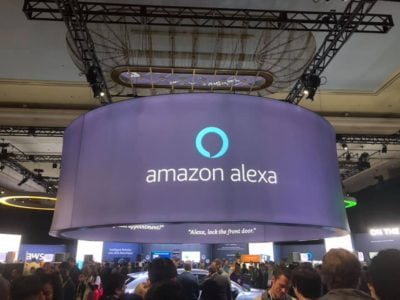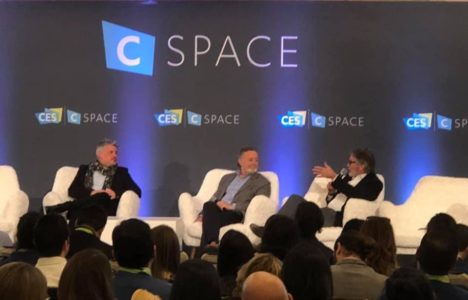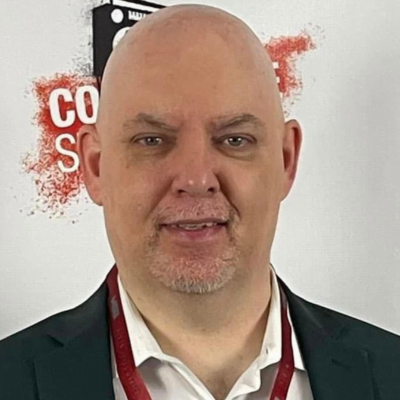A week in Sin City can feel like an eternity, especially when you’re in town covering CES (Consumer Electronics Show). Day after day you’re inside a hotel or convention center battling mobs of people to check out the latest inventions from some of the world’s top technology brands, hoping to get a jump start on the future before it becomes the present.
Although it’s a long week, there’s much to gain from it. As you’re introduced to various products, your mind starts to race with ideas. You begin thinking about the way the world will change, and contemplating what’s important to the future of your business, and what’s just fun to look at, but has little value to your line of work.
Whenever I attend a conference, I like to take a day or two to process what I saw before writing a column. So much gets tossed in your direction in a short period of time, and though we’re in a constant rush to feed the machine with content, I believe it’s important to step back and evaluate things. Had I rushed to write this piece after my first day or two at CES, I’d have told you flying taxi’s were going to be huge, and Google was on a different level than Amazon. By week’s end, I wasn’t convinced of either.
Starting with Google, they made a statement with their marketing on the outside, but when you went on the inside to talk to their people, they were energetic, personable, and happy to show you around, but didn’t take a ton of time explaining their products. They had a lot of items on display utilizing voice technology. That made it clear they’re bullish on the space. But I was there three different times, and not once did the staff look to engage, and discuss what they were introducing to the marketplace.
Meanwhile, Amazon operated with much less space, but everywhere I turned it felt like the company had assigned someone to their products who had a great understanding of them. Their people were less bubbly, but much more interested in sharing and showing what their products can do.

Whether it was the way Alexa worked inside Audi’s new electric vehicle or how their technology would improve consumer experiences with printers, television, refrigerators, alarms, and thermostats, Amazon reps were informed and confident about what they have in store for consumers. Their attention to detail during demonstrations made it very easy to become excited about what they were selling.
I had been told previously to expect nothing from Apple, so when I left for Las Vegas I had zero expectations. Sure enough, they weren’t to be found on site. However, they did display a huge banner outside of the Las Vegas Convention Center which created a lot of chatter. Displayed on the side of a hotel and taking up the equivalent of thirteen floors, Apple sent a powerful message to attendees: What Happens on Your iPhone, Stays on Your iPhone.
It’s clear that Tim Cook’s company is betting big on privacy meaning a great deal to customers. The banner was installed to remind consumers that Apple doesn’t attempt to sell your data while Amazon and Google both use it. That message I’m sure resonated with many who saw it.
During my travels to the Aria, Venetian, Sands, Mandalay Bay, Westgate, and Las Vegas Convention Center North and South halls, I tried to think of how certain products could affect the future of the radio business. For example, if a session took place and focused on 5G, autonomous cars, or voice technology, that was relevant to our business. If speakers scheduled for sessions had a connection to the radio industry, I tried to be there too to learn how they saw radio’s future opportunities.
What I didn’t do was get too caught up in stuff that may be fun, but had little connection to radio. Case in point, robots may become personal assistants for people in the future, but unless you believe they’ll be hosting future talk shows, I’m not too concerned about where they fit.

If you were looking to find technology to analyze your breast milk, your baby’s poop, or restock your refrigerator with beer when you run out, it was there. So too were electric mirrors, voice enabled light bulbs and toilets, bread makers, laundry folding machines, and headbands used to measure your brain signals and focus levels.
Though they’re each interesting and worth looking at for a few seconds, they had little connection to radio, therefore I enjoyed them for what they were, visual distractions. The only exception I made was stopping by the DreamWave area to test out their new massage chair. It would take one hell of a sales job to convince me to spend six thousand dollars on a chair, but they came damn close. The product was perfect for anyone dealing with physical pain or soreness.
Aside from enjoying my fifteen minutes of relaxation, I spent a lot of time exploring the future of autonomous vehicles and smart cities. When you see what each manufacturer has planned for consumers it’s pretty impressive. But whether it looks good in a show room at CES or not isn’t what matters. The big questions are, is it realistic, and if so, how soon?
Self-driving cars and digital roadways may be on the horizon, but opinions are very divided on how soon they’ll become a reality. That was made immediately clear during the very first session I attended when a group of speakers debated the pros and cons of building digital cities and relying on self driving vehicles.
When you factor in the construction that will be needed to create smart cities, the privacy concerns of having automakers know your in-vehicle habits, the challenge of making driver’s feel comfortable about giving up control behind the wheel, the cost of these vehicles, where they get stored, who insures them, and how situations will be handled when glitches or emergencies occur, there’s a lot still to figure out.

Can that be solved in 5 years? I don’t believe so. But whether it’s 5 years, 10 years, or longer, car companies would not be investing their time and resources towards this project if they weren’t committed to seeing it all the way thru. The future of driving will eventually change. When it does, it’s going to make the battle for content consumption even more interesting.
Much has been made the past few years about 5G being the savior to all of our internet problems. The next generation of internet speed is said to be lightning quick, capable of making the process of downloading songs, streaming movies, and loading websites nearly 10 times faster than 4G. According to most experts, it’s expected to be in place in 2020. Verizon, AT&T and Sprint though plan to launch 5G smartphones by late 2019.
CES provided opportunities for the world’s top mobile companies to hype up the arrival of 5G. Verizon in particular did a fantastic job of showing how things will work once 5G becomes available. CEO Hans Vestberg provided a number of examples, and called upon a few different participants to illustrate how much better things will be once 5G is introduced. If time allows I recommend watching the presentation. You can do so by clicking here.
Other sessions which earned my attention revolved around gaming, podcasting, and social media. Jemele Hill announced plans to launch an exclusive podcast for Spotify titled UnBothered starting in March. The music streaming service appears eager to ramp up its podcast offerings. Twitter announced plans to introduce single player camera angles during games as part of their partnership with Turner and the NBA. eSports was on display too with revenue growth and future impact being key areas of focus.
Speaking of eSports, I ventured over to the Luxor to scout the HyperX eSports arena. The venue is spectacular, and if places like this existed across the country, kids, and young adults would flock to it. There were 20 gaming spaces for people to play, big screens to watch competitive battles, merchandise for sale, and a private area for individuals or companies to reserve for private events.

If you work in sports radio, chances are you’ve heard a lot about the growth of eSports, but questions remain about whether or not it’s a fit for the sports format. The most popular game of 2018 was Fortnite, and while it may be fun to play, hearing it discussed on sports radio isn’t as appealing. Would it be different if the games being talked about were sports focused? Probably not, but at least they’d be sports themed.
That said, millions of people are playing video games. The investors behind these eSports teams aren’t investing millions of dollars because they’re bored. Arenas have been selling out for eSports events, sponsorship dollars are increasing, and talent agencies have started signing gamers just as they do professional athletes. Whether or not eSports can become mainstream is up for debate, but consumption of competitive gaming has been generating major interest, especially with younger fans. How that will carry over to sports radio, television, and print in the future though remains unclear.
As intriguing as competitive gaming may be, traditional operators are more enthusiastic about the growth of sports betting. As state after state loosens the reigns to allow legalized sports gambling, media brands are searching for ways to reap the rewards from being active in the space. If you stopped by Caesars Palace, you’d see signage everywhere highlighting the casino’s partnership with the NFL. Given how strict the NFL has been towards gambling in the past, this new relationship serves as a reminder that these are very different times.

Caesars may have the NFL association, but when I want to learn more about what’s going on, the place I go to is the South Point Casino, home of VSiN (Vegas Stats and Information Network). Brian and Brent Musburger held a special sports betting summit as part of CES week which included Gavin Maloof, Jimmy Vaccarro, Vinny Magliulo, Johnny Avello, Matthew Holt, Darren Rovell, Wayne Kimmel, and others. The three hour event offered tons of insight into legalization, betting safety, guarding against athletes affecting the outcome of games, and more.
As I watched the on-stage discussion though, I kept thinking about the critical importance of monitoring trends and identifying talent. If you rewind the clock to a few years ago, media brands weren’t rushing to sign guys like Vaccaro, Avello, Magliulo or Todd Fuhrman. Nor were they creating sports betting shows and featuring them in their weekday lineups. These guys were known in Vegas and inside the sports betting industry, but traditional operators viewed the space as niche. Now, everyone wants them because they’re experts in their field, sports gambling is becoming mainstream, and the money to be made figures to be substantial.
It wouldn’t have made sense to attend CES and not drop in on conversations with WWE’s Stephanie McMahon and George Barrios. I grew up a wrestling fan, but since becoming a media professional I’ve gained a far greater appreciation for how WWE operates as a business. That’s a testament to the vision and execution created and enforced by Vince, Stephanie and Shane McMahon, and Paul “Triple H” LeVesque.
What impresses me about WWE is that they’ve become a major global attraction. They’ve done so by continuing to develop new stars and programming, expanding their audience, increasing their revenue streams, and taking giant risks. In today’s cluttered media climate they stand out as one of the most forward thinking and successful digital brands, and consistently do a great job of sharing their story and creating buzz. You could see and feel that when Stephanie talked about the rise of women in professional wrestling, and she shined in spite of being poorly set up by a moderator who wasn’t fully prepared for the conversation.

As I bring this column to a close, I find myself excited, curious, optimistic, and cautious about the future. CES showed that the world’s best technology companies are working hard to create the next big things in our lives, but not every invention will be important to us. Especially for many of us involved in the radio business.
What concerns me is that there have been far too many examples of the radio industry being slow to adapt. We’ve also had a tendency to rely on others to create solutions rather than leading the charge ourselves. It’s far too common to find folks comfortable with where they sit today, and less worried about how they may be affected tomorrow.
If you walked around CES, you saw people everywhere who were driven by innovation and creativity. I thought about radio and its need to continue launching new products, formats, programs, and personalities, while also exploring new platforms and technologies. We sometimes forget that many of these great products that feature us still own the real estate, data, and audience. We are simply renters.
Aside from iHeart’s Bob Pittman, Beasley’s Caroline Beasley, and NPR’s Jarl Mohn taking part in panels at CES, I didn’t see any radio groups on display. To be fair, I didn’t expect to. Should we have been there? What would we have showcased? I’m not sure, but I do know that we can’t wait for opportunity to find us. It’s imperative that we work ahead and prepare for what’s next. Brands like VSiN and The Action Network are great examples of that.

We also need to do research to understand the challenges and best case scenarios ahead, and have confidence and conviction in what we’re working on. You’re going to take some lumps early on when you introduce new ideas. If you’re not prepared to be bloodied, don’t get in the ring.
I know the radio industry is excited about voice technology and the arrival of 5G. Both will make our business better. Autonomous cars and smart cities may take longer to embrace simply because they’re much further away. What we can’t do though is assume that these things will make us necessary. We’ve got to do a much better job of selling the value and success of our business, get more creative, take more chances, and make our brands, talent, and platforms a vital part of each listener and advertiser’s life. Anything less is asking for trouble.
The faster technology works, and the more time people have to enjoy content inside their homes or vehicles, the tougher the challenges will be to stand out. Competition is increasing, and coming from every form of media, not just audio providers. If your brand isn’t known for more than its format and signal, you’re on the fast track to becoming forgotten instead of seen as a vital part of the future. The good news, you still have time to change it. Just don’t wait too long because the future’s on the verge of becoming the present.

Jason Barrett is the Founder and CEO of Barrett Media. The company launched in September 2015 and has provided consulting services to America’s top audio and video brands, while simultaneously covering the media industry at BarrettMedia.com, becoming a daily destination for media professionals. Prior to Barrett Media, Jason built and programmed 95.7 The Game in San Francisco, and 101 ESPN in St. Louis. He was also the first sports programmer for SportsTalk 950 in Philadelphia, which later became 97.5 The Fanatic. Barrett also led 590 The Fan KFNS in St. Louis, and ESPN 1340/1390 in Poughkeepsie, NY, and worked on-air and behind the scenes at 101.5 WPDH, WTBQ 1110AM, and WPYX 106.5. He also spent two years at ESPN Radio in Bristol, CT producing ‘The Dan Patrick Show’ and ‘GameNight’. JB can be reached on Twitter @SportsRadioPD or by email at Jason@BarrettMedia.com.




